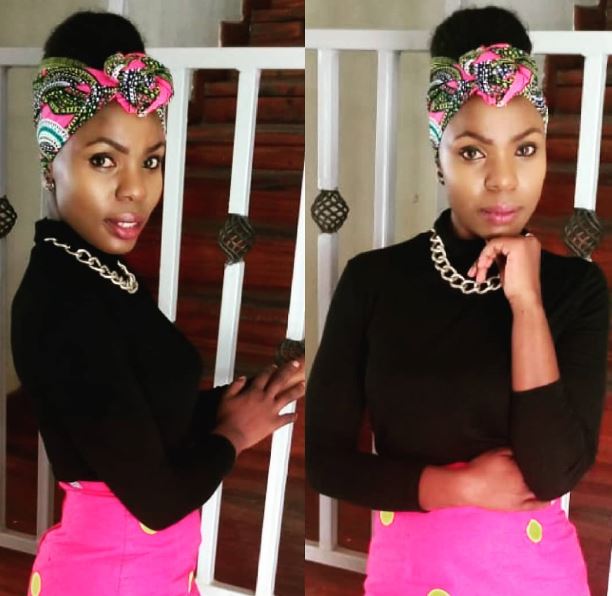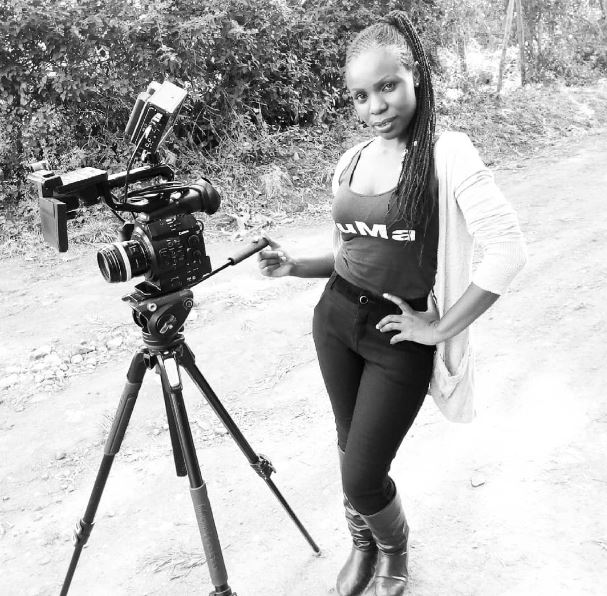
Ms Mwende spoke to Spice Magazineabout her styling journey.
Where did your styling journey start?
In 2014, I was lucky enough to be a wardrobe stylist intern with Spielworks Media for three months.
After three months, I was promoted to assistant wardrobe stylist and given the first show I ever styled, Sumu La Penzi.
I have never looked back since then and have been blessed enough to style numerous local shows, films, commercials, and client photoshoot sessions.
Why is costume styling important in storytelling?
Costumes are a storytelling tool. When a brand or a person wants to tell a story, the first thing they do is arrange the wardrobe to be used in a photoshoot as it will tell the executive’s or farmer’s story in a glance.
In films, costumes communicate the details of a character’s personality and can make or break a film.
Some of our most memorable characters in films wow us first with their incredible fashion, before we even notice how in character they are.
How do you prepare for styling shows, especially when you can shoot so many scenes in a day?
Before starting any TV programme or show, there’s something called a ‘character bible’ that guides the costume designer about casting choices.
It has specifics on characterisation and the mood of the film or show. Once you study this, you can then start sourcing for materials immediately after casting so that outfits fit your cast.
There is also a shooting schedule with scenes to be shot every day that guides the stylist on the day-to-day wardrobe choices.
It is also important to have an iron box and a needle and thread nearby. Some creased clothes might need steaming or something might tear.
You might also need to improvise and soil or crease some clothes for some scenes. It is quite interesting; no day is the same.
What does fashion and image mean to you?
They mean a lot to me. I believe fashion forms part of someone’s identity whether you consciously put work in or just throw on whatever you want.
This is why it is important to make a conscious decision on what pieces you want to wear and what you want to be known for.
For me, it is not just my job. Fashion transcends into my personal life, as I want to be able to control how people perceive me even when I don’t speak a word.
Whether in jeans or a dress, I have curated a personal sense of style that communicates that I am stylish without it being overly intimidating.
What keeps you going?
I am really passionate about costume styling and the Kenyan film industry. I also really love fashion and I am genuinely the happiest picking out outfits and styling cast members on set.
I find it exciting seeing how costumes aid in storytelling. I feel lucky to wake up every day to do something I like.
Has the costume styling industry changed in the years you’ve been active?
The wardrobe styling has grown. With production houses mushrooming every day and more content being created, there is a rising need for stylists.
This is a great thing as it also grows appreciation for the styling craft. Growth also encourages us to raise the bar as there is stiff competition.
It means I will want to do my job so well to stand out and be booked for more jobs.
Any styling or fashion tips for our audiences?
Be experimental till you land on a sense of style that you are comfortable with and that is uniquely you.
This is the only way you will be able to express yourself fashionably without oscillating with the ever-changing fashion fads.
Remember to keep it simple; fashion does not have to be complicated. Most importantly, have fun. After all, fashion is your tool to help you express yourself in life, enjoy it!
source http://nairobiwire.com/2021/01/mercy-mwende-meet-stylist-behind-sue-na-jonnie-sumu-la-penzi-wardrobe.html

No comments:
Post a Comment